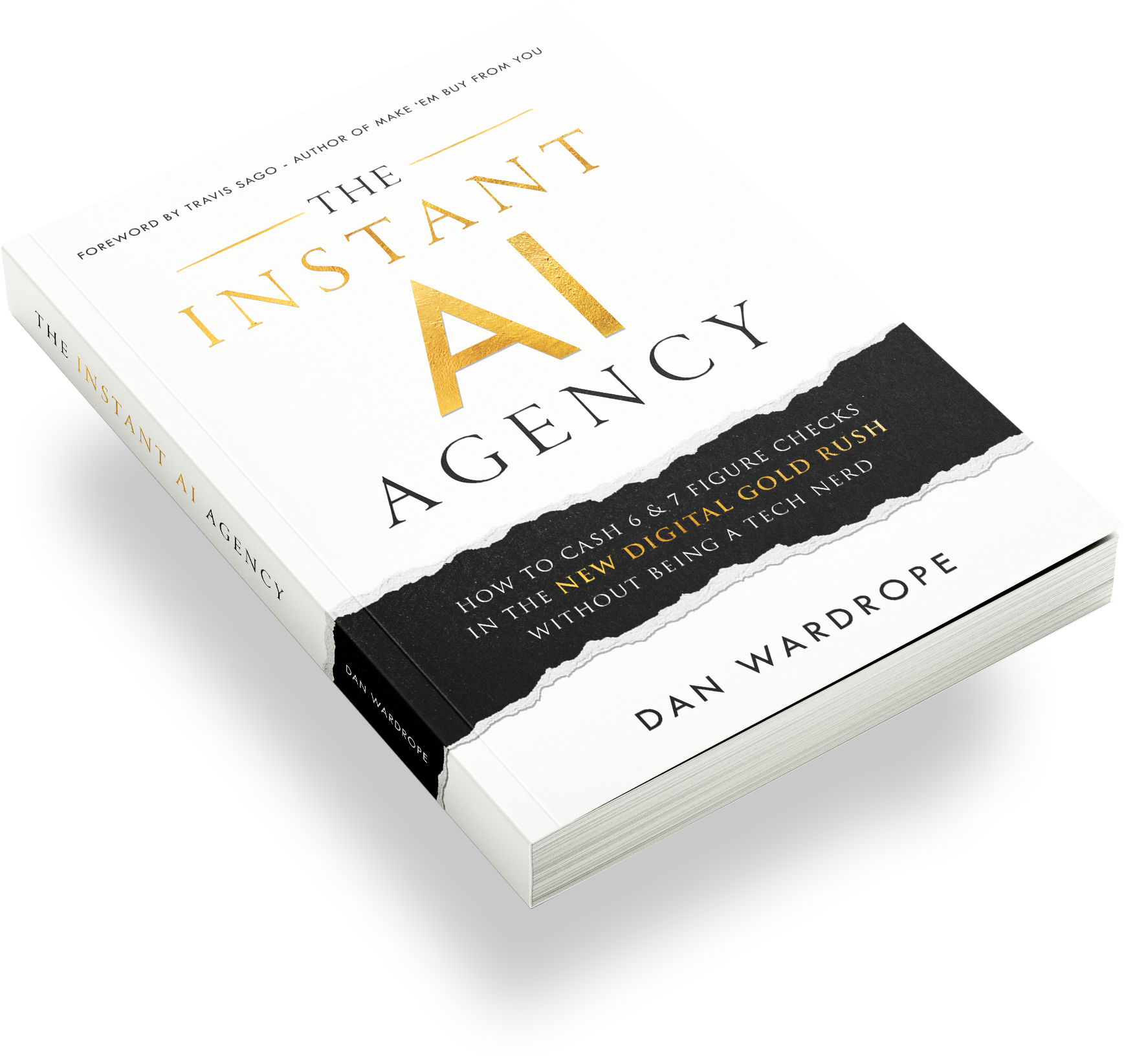Getting your lead generation web pages to rank used to be easy.
Before SEO became the computer whizz kid’s science, its entire premise revolved around keywords.
It didn’t matter what your content was about, or whether it was actually useful. The aim of the game was to pick a keyword and stuff it into as many sentences as possible, sense and readability be damned.
The result was like packing a turkey with sage and onion until the meat collapsed, then trying to convince the doubters it was a delicious meal.
Here’s an example of keyword stuffing I’ve just made up:
Are you looking for someone to design your dream wedding dress? Our dream wedding dresses are dream wedding dresses like no other. When we design dream wedding dresses, we keep your dreams and your wedding dress in mind. That’s why our dream wedding dresses are what dreams are made of.
And guess what? Nonsense like this actually worked.
For Google rankings, anyway. Before Google wised up to this SEO black hat technique, it was easy to fool the algorithm all the way to the lusted-after No. 1 Spot.
So, like any marketer looking to make money, I jumped onto the rank-a-site bandwagon and modelled my entire lead generation business on it.
This is what happened.
The Rank-A-Site Model: The Old Way
Step One: A Keyword Stuffed Domain
For anyone new to my blog, FlexxDigital is a cost-per-lead agency. This means we charge clients an agreed price for each lead we supply them, rather than work off retainer contracts.
To generate enough leads to make a decent living, I was advised to buy a domain.
Lo and behold, my first domain was christened solarpanelsbrighton.co.uk.
The idea was to start as I meant to go on – with a keyword rich URL that directly catered to the needs of my clients.
I’d design the pages with pre-made templates from WordPress. The home page had a form with textboxes for the customer’s name, address and telephone number. The remaining pages contained no useful information whatsoever, but boasted five or six variations of “solar panels in Brighton”. These would be repeated as many times as humanly possible.
Then, just in case Google thought my efforts were subtle, I started littering my pages’ codes with SEO meta tags.
Meta tags describe a page’s content without appearing on the page itself. Hidden in the page’s code, they tell search engines what a web page is about.
💡 TIP: If you want to see if a page uses meta tags, right-click anywhere on the page and select “View Page Source”.

The meta tags will look like this:

The meta tags I used on solarpanelsbrighton.co.uk were called Meta Keyword Attributes.
This was just another case of keyword stuffing, but I thought I was being extra sneaky about it. Google would see the dedication I had to my cause – to get that No 1 Spot – and would have no choice but to rank my web pages above those with valuable content.
Step Two: Lots of Keyword Stuffed Domains
All in all, my domain took about 20 hours to finish (plus the $300 I paid someone to build it).
And Google would rank it.
Because my copy was headache-inducing, and the useful information was next to none, I’d get about three organic hits a week. Out of those three, one of them would become a lead.
I planned to charge 50 bucks for this lead to the client who wanted it. That was my entire sales model.
You don’t have to be shy; you can say it. Selling one lead a week, even for $50, was nowhere near enough to live on.
Instead of wasting time making my web pages valuable (and getting more leads in the process), I used the “rinse and repeat” method for 50 other websites.
1,000 hours and $15,000 later, it dawned on me that my genius plan wasn’t so genius after all.
Bested By a Penguin
Then, one grey April morning in 2012, Google announced the launch of Google Penguin.

While its older cousin, Google Panda (released 2011), aimed to wipe-out low-quality content, you could avoid this with keyword stuffing.
However, the more clued-up Penguin soon put a stop to this too. Impacting 3.1% of English language search queries, link schemes and keyword stuffing became SEOs biggest no-nos virtually overnight.
Keen to salvage anything I could out of the wreckage, I searched for all my lead generation web pages. Google had pushed 90% of them back to Page 15, lost in the ether of other crappy pages.
My business took less than 24 hours to evaporate, and people are still teaching this model.
The Rank-A-Site Model: The New Way
Step One: Paid Traffic
Unless you have serious SEO skills (and congrats if you do), the old model is almost impossible to use successfully.
Nowadays, the quickest way to start generating serious leads is to use paid traffic – aka, ads via Facebook or Google AdWords.
First off, you need to build a lead generation website. Lead generation websites encourage online visitors to inquire about your product or service.
This is how a lead generation website differs from my old, spam-infested web pages. Lead generation websites contain:
- A strong call to action
- A conversion form
- Informative content
- A clear value message
- Hidden analytics to measure leads and click-backs
In other words, lead generation websites turn cold or warm traffic into red hot leads.
When choosing your website’s URL, don’t worry too much about what it’s called as you’ll be driving paid traffic to it. It won’t matter where it ranks on Google, as your ads send visitors straight to the site.
That said, use a .com suffix if you can. Roughly 52% of all websites use .com as their domain suffix, and they rank the best on Google. When searching for your site, visitors are more likely to settle on .com as a default, which is why Google grants the .com suffix with such authority.
Step Two: Unbounce
Back in the day, I thought nothing of paying someone $300 to design my lead gen websites.
But stunts like this can soon prove costly, and there’s a much quicker (and cheaper) way of doing things.
I started using the Unbounce drag-and-drop website builder a few years ago, and I haven’t looked back since. Demanding no coding skills whatsoever, FlexxDigital uses Unbounce for every page created within the agency.
Unbounce makes pages look great across all devices. Set with both desktop and mobile modes, you can easily switch between the two and watch your page’s progress. Something not looking right on mobile? Press “Ctrl” on your keyboard and modify what you need. This will stop the changes affecting the page’s desktop appearance.
If you’re looking to avoid paying thousands to a web designer, Unbounce’s “Essential” package costs $79 a month. At $159, it’s premium version lets you make up to 150 landing pages a month.
To find out more about Unbounce, check out their website here.
Step Three: Use Quiz Software To Segment Your Leads
Back in my rubbishy lead gen website days, I didn’t know whether the one lead I got a week was any good or not.
But, as technology advances, separating high-quality leads from bad ones is easier than ever before.
One of my favourite ways to segment leads is with quizzes and surveys. Visitors are more likely to see the funnel through if there’s an interactive element, whereas an overly long form may put them off.
A quiz or survey also makes the prospect feel like they’re being heard. Even if your quiz or survey only has two outcomes (We Can Help You/We Can’t Help You), visitors will think you’ve tailored your offer to their specific needs.
We use the quiz software LeadsHook in most of our ad funnels. Though quizzes mean that the audience will have to make more clicks, the reams of data help to qualify our leads and categorise them according to type.
Here’s an Example
If you have multiple clients in the same vertical, it’s also possible to make money out of any kind of lead. Client 1 in Manchester, for example, could be looking for customers from Manchester who will spend a lot of money, whereas Client 2 in Glasgow will take on prospects from anywhere with a limited budget.
Let’s circle back to solar panels. Website Visitor A is a homeowner, owns a detached house, and can spend about $20,000 on solar panels. They put answers that match that into the quiz, and you direct their custom to Client 1, who wants that type of lead.
Website Visitor B rents a flat for the moment, but will move into a starter home within three months. You direct that lead to Client 2, who will file that info and nurture conversion at another time.
Lead segmentation like this can go on for as many clients as you have in that vertical.
This way, you, your clients, and your visitors will be happy.
- You can make money with any lead that comes your way
- The client gets the exact kind of leads they want
- The visitor/lead feels like they’ve had special treatment.
Conclusion
Paying for your traffic can get you serious results in a matter of days. You can easily set up an entire sales funnel, complete with Unbounce pages and a LeadsHook quiz, in less than a week.
A strong SEO strategy for generating organic content would undeniably be a plus. However, if you think you can learn SEO overnight, you’d be wrong. Great SEO techniques can take years to master, and even basic strategies can take months to see results. A conversion problem that takes three to six months to fix could be catastrophic for your business.
However, if you spend enough time perfecting your lead generation website, you could soon find yourself dominating your niche.
The volume and quality of your leads will impress potential clients. Meanwhile, the professionalism of your site will attract thousands of visitors (and it’s not hard to beat those old keyword stuffed web pages!).
If you’re looking for some more advice on how to generate top-quality leads, move away from retainer contracts, and attract high-paying clients, watch my FREE case study now.
Learn how we:
- Migrated from local businesses
- Started working with national B2C companies
- Land high-ticket clients with deep pockets
- Found the verticals we’ve worked in
- Generate leads of the highest quality
A world of lead gen is yours at the click of a button. Just select “Watch Now”!











